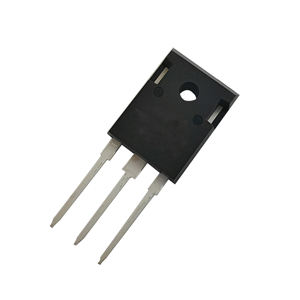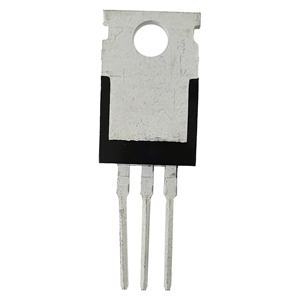Thyristors Online | High-Quality Power Semiconductors
Introduction: The Cornerstone of Power Electronics
In the realm of power electronics, few devices have revolutionized the industry as profoundly as the Silicon Controlled Rectifier (SCR), commonly referred to as a thyristor. As a pivotal component in SCR electronics, the SCR has carved its niche by enabling efficient control and conversion of electrical power in numerous applications. This blog post delves into the intricacies of SCRs, compares them with similar semiconductor devices, and explores their critical role in modern electronics.

Understanding Silicon Controlled Rectifiers (SCRs)
Definition and Basic Operation
A Silicon Controlled Rectifier is a unidirectional semiconductor device that allows current to flow in one direction once triggered into conduction. It consists of four layers of alternating P-type and N-type semiconductor materials, forming three junctions: J1, J2, and J3. The SCR remains in a non-conducting state (off state) until a sufficient voltage pulse is applied to the gate terminal, triggering it into conduction (on state). Once triggered, the SCR continues to conduct even after the gate signal is removed, remaining in the on state until the current drops below a certain threshold, known as the holding current.
Structure and Symbolic Representation
The SCR’s structure is analogous to that of a diode with an additional gate terminal. This additional terminal provides the means to control the device’s conduction, distinguishing it from a simple diode. The symbolic representation of an SCR includes an anode, cathode, and gate, with the anode-cathode path being the primary current-carrying path.
Thyristor Family: Beyond the SCR
Thyristor Basics
The term “thyristor” encompasses a broader family of semiconductor devices, all sharing the characteristic of four-layer PNPN structures. While the SCR is the most well-known member, other types include the Gate Turn-Off Thyristor (GTO), TRIAC, and DIAC. Each of these devices offers unique functionalities, but the SCR remains fundamental due to its simplicity and robustness.
SCR vs. GTO: A Comparative Analysis
The Gate Turn-Off Thyristor (GTO) is a variant of the SCR that can be turned off by applying a negative gate current. This feature grants the GTO greater control flexibility compared to the SCR, which can only be turned off by reducing the anode current below the holding current. However, this added functionality comes at the cost of increased complexity and higher gate drive requirements, making the SCR a preferred choice in applications where turn-off control is not critical.
SCR vs. TRIAC: Handling AC Power
Unlike the SCR, which is unidirectional, the TRIAC is a bidirectional thyristor capable of conducting current in both directions. This makes the TRIAC ideal for AC power control applications, such as light dimmers and motor speed controllers. While the TRIAC offers versatility in handling alternating current, the SCR’s unidirectional nature is advantageous in DC circuits or applications requiring precise one-way current control.
SCR Electronics: Applications and Advantages
Power Control and Conversion
SCRs are extensively used in power control and conversion applications due to their ability to handle high voltages and currents efficiently. They are employed in rectifiers, inverters, and choppers, playing a crucial role in industries such as renewable energy, electric vehicles, and industrial automation. The SCR’s capability to switch large amounts of power with minimal losses contributes to energy savings and improved system efficiency.
Speed Control and Phase Control
In motor drive systems, SCRs are utilized for speed control through phase control techniques. By varying the firing angle of the SCR, the portion of the AC waveform applied to the motor can be adjusted, thereby controlling the motor’s speed. This method is widely adopted in applications requiring variable speed drives, such as fans, pumps, and conveyors.
Surge Protection and Overvoltage Clamping
SCRs also find application in surge protection circuits, where they act as crowbar devices to protect sensitive electronics from voltage spikes. When an overvoltage condition is detected, the SCR is triggered into conduction, effectively shorting the excess voltage to ground and safeguarding the connected equipment.
Comparative Analysis: SCRs vs. Other Semiconductor Devices
SCRs vs. Bipolar Junction Transistors (BJTs)
Bipolar Junction Transistors (BJTs) are another class of semiconductor devices used for amplification and switching. While BJTs offer higher gain and faster switching speeds compared to SCRs, they are limited in their power-handling capabilities. SCRs excel in high-power applications due to their ability to withstand high voltages and currents, making them more suitable for power electronics than BJTs.
SCRs vs. Metal-Oxide-Semiconductor Field-Effect Transistors (MOSFETs)
MOSFETs are known for their high input impedance, fast switching speeds, and ease of drive. However, similar to BJTs, MOSFETs have limitations in high-power applications. SCRs, on the other hand, are designed to handle substantial power levels, making them indispensable in applications where power efficiency and reliability are paramount. Despite the advent of newer semiconductor technologies, the SCR’s robustness and simplicity ensure its continued relevance in power electronics.
SCRs vs. Insulated-Gate Bipolar Transistors (IGBTs)
The Insulated-Gate Bipolar Transistor (IGBT) combines the best features of MOSFETs and BJTs, offering high input impedance and high current-carrying capacity. While IGBTs are widely used in medium- to high-power applications, SCRs still hold an edge in ultra-high-power scenarios where their ability to handle extremely high currents and voltages is unmatched. Additionally, SCRs are often more cost-effective in high-power applications, contributing to their enduring popularity.
Challenges and Future Prospects
Switching Speed Limitations
One of the primary limitations of SCRs is their relatively slow switching speed compared to newer semiconductor devices like MOSFETs and IGBTs. This can be a drawback in applications requiring rapid switching, such as in high-frequency power supplies. However, advancements in SCR design and materials are continually being explored to enhance their switching performance.
Gate Drive Requirements
SCRs require a specific gate drive circuit to trigger them into conduction. This adds complexity to the overall system design, especially in applications where space and cost are constraints. Innovations in gate drive technology aim to simplify these requirements, making SCRs more user-friendly and versatile.

Emerging Technologies and the Role of SCRs
As the world transitions towards renewable energy sources and electric mobility, the demand for efficient power electronics continues to soar. SCRs, with their proven reliability and high-power capabilities, are poised to play a significant role in these emerging technologies. Ongoing research focuses on improving SCR performance, integrating them with advanced control systems, and exploring novel applications in smart grids and energy storage systems.
Conclusion: The Enduring Legacy of Silicon Controlled Rectifiers
In conclusion, the Silicon Controlled Rectifier, or SCR, stands as a testament to the transformative power of semiconductor technology in power electronics. Its unique characteristics, including high power-handling capability, robustness, and simplicity, have cemented its place in a myriad of applications. While newer semiconductor devices offer enhanced performance in specific areas, the SCR’s enduring legacy in high-power electronics remains unchallenged. As technology evolves, the SCR continues to adapt, promising to remain a cornerstone of power electronics for years to come. Whether in renewable energy systems, electric vehicles, or industrial automation, the SCR’s role in shaping the future of power electronics is both profound and indispensable.
Supplier
Luoyang Datang Energy Tech Co.Ltd focuses on the research, development, and application of power electronics technology and is devoted to supplying customers with high-quality transformers, thyristors, and other power products. Our company mainly has solar inverters, transformers, voltage regulators, distribution cabinets, thyristors, module, diodes, heatsinks, and other electronic devices or semiconductors. If you have any questions, please feel free to contact us.(sales@pddn.com)
